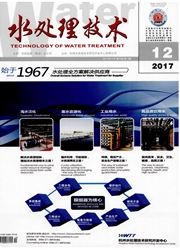

 中文摘要:
中文摘要:
采用新型专利的特异性移动床生物膜反应器(SMBBR)处理聚氯乙烯(PVC)废水,针对于PVC废水成分复杂、可生化性差、处理难度大的特点,采用2种不同的挂膜方式,即全程采用废水培养和先用清水加营养液培养成膜、再逐步进废水的方法。比较2种方式的处理效果。结果表明,在进水温度15-25℃、设计体积流量为18 L/h、HRT为12 h时,采用先成膜,后处理的方法具有优势。
 英文摘要:
英文摘要:
The new patent-specific aerobic moving-bed biofilm reactor(SMBBR) was used to treat polyvinyl chloride(PVC) water.For complex composition,poor biodegradability and difficulty in the treatment of PVC wastewater,two different methods of film formation was applied,which meant wastewater culturing and film formation with water and nutrient solution,then gradually brought in wastewater.Compare the treatment effect of two ways,experimental results indicated that when water temperature was 15-25 ℃,the design volume flow rate was 18 L/h,and HRT was 12 h,the method of forming the film first,followed by the treatment hold great advantages.
 同期刊论文项目
同期刊论文项目
 同项目期刊论文
同项目期刊论文
 期刊信息
期刊信息
